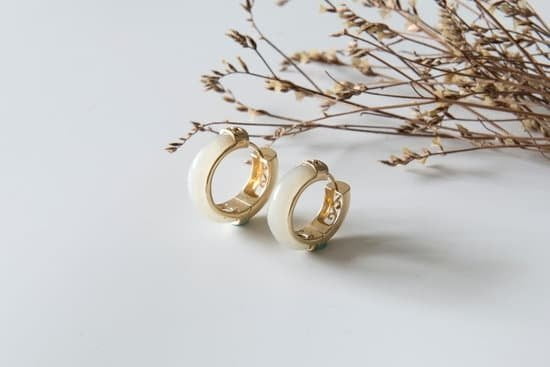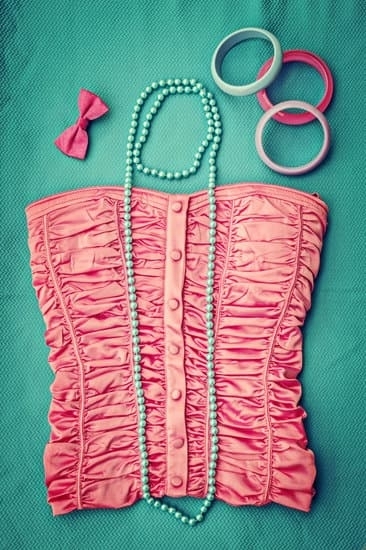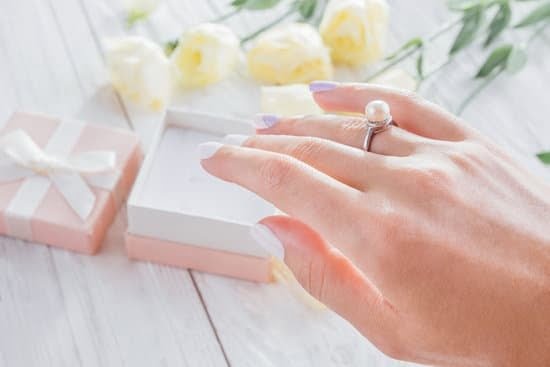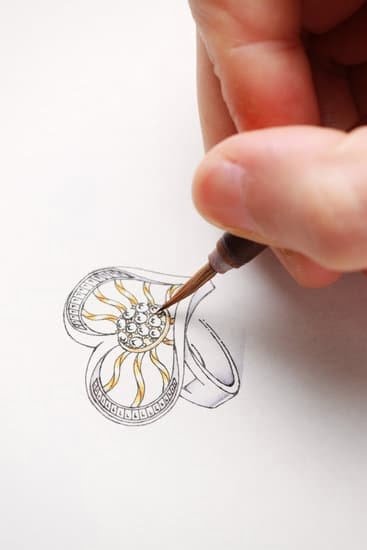Ancient Egypt jewelry materials, such as gold and silver, were highly sought after thousands of years ago for their beauty and symbolic significance. Jewelry was important in the ancient Egyptian culture because it was used to show one’s wealth, status, and even religious affiliation.
Whether material or spiritual, it held great value as a signatory of a person’s influence and rank in society. As time progressed, different materials were used to create ornate pieces of jewelry which then became an integral part of Ancient Egyptian culture.
A variety of precious metals were primarily used to craft jewelry during this period; however, it is believed that gold and silver were the most popular among these materials. Both gold and silver provided a visual representation of power and wealth since they formed strong associations with the gods who embodied these qualities during the Old Kingdom period.
Gold was also considered to be inherently valuable due to its relative rarity at the time while silver remained more accessible than its respective counterpart due to its prevalence in nearby regions. Additionally, certain stones like turquoise quartz or lapis lazuli were also embedded into select pieces owing to their perceived sacredness by Ancient Egyptians.
Moreover, ribbons made out of colored linen woven through artificial rings constructed from bone or ivory gradually became more commonplace as time progressed; this practice provided multiple opportunities to further customize certain pieces with unique colors for aesthetic purposes as well as giving them meaning catered towards religion or spirituality beliefs.
Moreover, other materials like metal beads or seashells also began appearing more frequently alongside more common sources towards the beginning of the Middle Kingdom period all throughout its culmination in the New Kingdom Period; particularly with regards to necklaces or belts meant for wearing close to one’s skin as it was seen as an extension of their commitment towards worshipping specific deities when adorned appropriately iwht nhet material necessary.
Forging these intricate pieces required hard work but still managed remain incredibly popular across all classes ranging from royalty down even to those living within less privileged backgrounds. It was customary for individuals to receive gifted items on special occasions such as weddings or any celebration related event that had evenhanded implications beyond just decorative measures meant for personal pleasure alone.
Consequently, iconic symbols associated with Ancient Egypt continue resonating into contemporary times directly correlated thanks largely in part due towards these widespread practices being enjoyed across large swaths segments fo teh population back then.
Precious Metals and Stones
Ancient Egyptian jewelry was fashioned from precious metals and stones, including gold, silver, lapis lazuli, carnelian, and turquoise. Gold was especially popular due to its incorruptible nature. It could be fashioned into intricate shapes and designs and could easily be used to represent any object or symbol. Silver was also a popular choice due to its resistance to tarnishing over time. Other metals such as bronze and copper were also sometimes used in the crafting of jewelry.
One of the most striking aspects of Ancient Egyptian jewelry making is their use of semi-precious stones like lapis lazuli, carnelian, and turquoise. Lapis Lazuli was highly sought after for the deep blue color it could bring to necklaces or other pieces of jewelry.
Carnelian was another favorite because of its brilliant red hue which was said to imbue the wearer with revolution and courage. Turquoise also became an iconic part of Ancient Egyptian jewelry because of its intense blue green hue which offered up protection from injury and accidents when worn.
In addition to these materials, Ancient Egyptians employed the usage of other rare materials in their craftsmanship such as:
- Wood
- Leather
- Bone
- Ivory
- Papyrus
- Linen
These materials were often used for pieces inspired by natural forms such as flowers or beetle-like shapes that had spiritual significance in Ancient Egypt’s polytheistic culture. Some jewellery items such as amulets were even crafted from animal parts like bones or teeth that held special meaning in ancient symbolism. Papyrus remained an important amulet material because it represented fertility and growth within Egyptian mythology.
The Artistry of Ancient Jewelers
At the heart of ancient Egyptian jewelry is an intricate craftsmanship that has been passed from generation to generation, beginning in 4000 BC. Ancient jewelers were creative visionaries who brought to life many sourcing techniques and crafting innovations.
Some of the most precious, everlasting materials that were used by these artisans included gold and semi-precious metals such as silver and bronze. These metals had to be smelted down into their liquid forms first, and then shaped according to the desired item through an alloying process. Gold was heated with a charcoal furnace until it reached melting point, whereas other metals required higher temperatures-silver needed 900 degrees Celsius and bronze needed 1100 degrees Celsius.
Tons of valuable stones, beads, pearls and shells were also available for jewelers from nearby regions. For example, turquoise mined from Sinai Peninsula arrived in large quantities throughout Egypt before being ground down finely into powder form for many pieces of jewelry crafted by the Pharaohs’ priests-priests typically adorned themselves with this exquisite stone when meeting or performing rituals at religious sites.
Colors like red carnelian, green feldspar (known as Lapis Lazuli) and black basalt stones curved into amulets further served as unique embellishments on necklaces and other items in order to intimidate owners’ impure forces away from their bodies per the gods’ will.
- Gold
- Silver
- Bronze
- Turquoise
- Carnelian
- Lapis Lazuli
- Basalt Stones
In addition to these elements, ancient Egyptians sourced ancient bone fragments – likely acacia wood – horns, ivory tusks from hippopotami – all which could be polished down for use as accessories or part of temple statues honoring gods like Ra or Isis.
An array of plant resources like papyrus fibers used to make mats could be cut further into delicate strips for creating baskets for holding gold nuggets found within Egyptian deserts or long straps for slinging across bags signifying elegance-driven travel chest protectors when journeying across arid wastelands towards more peaceful residence havens far away from pharaohs’ royal palaces.
Ancient Egyptian Engraving
Egypt has a long and rich history with elaborate jewelry dating back to Ancient Egypt. Archaeologists have discovered countless beautiful items made from numerous precious stones, metals, and beads crafted into intricate designs which were mostly used as adornments for religious purposes. Jewelry was so important that the elite even began to represent themselves in their baubles and decorations, expressing dignity, power, and wealth through their personal style statements.
Perhaps one of the most recognizable symbols to come out of Egyptian culture is their use of hieroglyphs on jewelry pieces. Hieroglyphs are often thought to represent gods or historical figures; however, they can also denote meaningful messages about who the wearer is or their spiritual beliefs.
Consequently, ancient jewelry found in tombs often depicted symbols such as scarab beetles and papyrus plants which were believed to bring good luck and longevity. Other meaningful symbolism combined physical representations with hieroglyphic script; for instance, engraved images of animals such as lions reminded wearers of strength while accompanying spells could give protection against evil influences.
Types Of Materials Used In Ancient Egyptian Jewelry
- Gold and silver: Gold was highly valued by Ancient Egyptians mainly because it never tarnished.
- Gemstones: These stones typically had religious significance associated with them.
- Wood: Carved wooden beads were probably some of the earliest forms of beadwork known.
- Leather: Many ancient pieces might originally have been sewn onto leather straps or bracelets.
- Copper and bronze: Bronze was said to possess healing capabilities & copper is believed to ward off evil spirits.
Colorful Semi-Precious Stones Used in Ancient Jewelry
Possessing jewelry has a long history that dates back to as early as the Paleolithic period. Towards the end of the Old Kingdom of ancient Egypt (2060-1810 BC), semi-precious stones such as carnelian and lapis lazuli were used extensively in creating fashion accessories.
Carnelian is a soft red-orange stone derived from silica minerals, and was mainly available in trade from the kingdom of Punt which is located south east of Egypt. It was regularly used for both decorative and protective purposes and was believed to bring good fortune to its owner. It was carved into scarabs, bracelet bangles, anklets, rings, and even statuettes of gods.
Lapis Lazuli is one of the oldest gemstones known to mankind since at least 7000 BCE. It appears mostly in shades of blue ranging from light “Egyptian Blue” all the way through royal blue hues. Owing to its regal vibes, it became a symbol of status and wealth and is often associated with deities like Isis and Osiris in Ancient Egyptian mythology.
Some interesting pieces found from tombs are wide collars made up entirely with Lapis Lazuli beads, divided by golden rings at each joint. The symbolism was further heightened due to an anecdote where Horus offered Pharaoh Narmer a lapis necklace as a sign authority or kingship ring over two centuries later during 3000 BCE in Ancient Hierakonpolis region (Upper Egypt).
Obsidian is a type of volcanic glass formed when molten lava cools down so quickly that quartz minerals don’t have enough time to crystallize it fully. It appears black but can shimmer dark brown or other deep colors depending on angle and lighting conditions due to the presence of some reflective minerals embedded within it like silver or hematite particles.
Its use ranged from durable vessels for fermentation herbs back then up until now-a-days where chic chandeliers made up using it illuminate modern homes beautifully.
Amethyst is produced mostly during cooling stages within cavities inside certain rocks like agates etc., ranging mostly between pale lilac tints all the way down towards maroon purple hues similar to many rubies on display out there today. It was highly respected amongst Egyptians due to its affiliation with divine Isis whose procession during festivals included this enigmatic looking violet crystal leading off her armada from great distances representing her power across the lands above six seas.
Ancient Jewelry Materials
- Carnelian
- Lapis Lazuli
- Obsidian
- Amethyst
Beads of Ancient Egyptian Queen Nefertiti
Queen Nefertiti was a prominent figure of the 18th dynasty of ancient Egypt, known for her power and beauty. As such, her name has made its way into many historical artifacts and is still celebrated to this day.
In addition to her historical influence, Queen Nefertiti was also well-esteemed for her classic style of jewelry design. Crafted from various materials ranging from cut stones to clay beads, these accessories underscored the ongoing stylistic shift within the culture – from custom pieces handmade by local artisans to more accessible creations made by professional jewelers around the country.
Glazed Organization
These intricate accoutrements were largely crafted with glass beads found in various glazes and hues. Arranged in organized patterns of faience and steatite, large groups of gorgeous beads were transformed into grand adornments that could accompany even the most formal regal attire.
Moreover, although modern interpretations tend to place an emphasis on soft shades such as reds and blues, much of Nefertiti’s jewelry was in fact more vibrant tones thanks in large part to the intense dyeing procedures used in Ancient Egypt times. The refulgent yellow gold mica accentuated both personal style and royal wealth – an effect not lost on certain wealthy deities throughout this time period as well.
Stone Cut Variety
In addition to glass beads, many other materials were utilized to create these dazzling pieces; among them being stone cuts from lapis lazuli and marble chunks that had been specially cut for this purpose. Generally in cubic or octahedral shapes (known as “cartouches”), stones carved into scarab pendants or rings added an elevated opulence no store bought bauble could replicate – wearing these pieces proclaimed your importance far better than simply donning a modern gold chain ever could.
Furthermore, traces of ivory indicate that luscious necklaces and earrings were fashioned with white tusk too while semiprecious gemstones including malachite have been widely discovered around ceremonial sites of ancient Egypt proving their once widespread use too.
Clay Used Creatively
Finally, it should be noted that several common varieties of clay including kaolin were used artistically alongside the already mentioned material choices when making jewelry back then.
Intricate animal figures made with potter’s clay may have helped complete complex arrangements along with its famously malleable nature broadened design capabilities when handling delicate items such as fragile figurines or elaborately detailed arm bands; indeed each bead or ornament thus formed took on its own meaning bringing extra mysticism to any queen’s treasure chest.
And although highly fragile compared to some of its harder counterparts like porcelain or gemstones – when handled correctly clay remained one a queen’s favorite elements in making lasting memories during life but also remembered for years ahead after death when buried alongside.
Hair Extensions and Combs Used in Jewelry
Hair extensions and combs were used in ancient Egypt to adorn both men and women. Hair extensions refer to long hair-like elements crafted from various materials like glass, ivory, bone or precious stones.
They could be worn for a variety of reasons, but most commonly as decorative accessories as part of necklaces, earrings or other jewelry items. Combs were another important type of hair accessory used in the fashion industry at the time; combs allowed people to keep their hair in place while it was decorated with jewels and they often incorporated artful carvings alongside its more functional use.
In order to protect their delicate skin from the harsh Egyptian sun, ancient Egyptians covered their heads and accessorized with cloths, scarves, ornamental pins and often colorful headdresses. Hair extensions offered another way for them to express themselves through their style while safeguarding their refined sense of aesthetics.
Ancient Egyptians also favoured using semi-precious stones such as obsidian and turquoise that were believed to have special healing qualities or provide a spiritual protection when they were wearing them. As well as having both practical and aesthetic uses, these pieces often demonstrated higher social status of someone because only those with wealth and luxury were able fabrics like beads adorned with precious stones pieces.
- Hair Extensions – Crafted from materials such as glass, ivory, bone or precious stones.
- Combs – Used to stylishly keep hair in place whilst decorated with jewels.
- Cloths, Scarves & Headresses – Worn to protect the skin from the harsh sun.
- Semi-Precious Stones – Used for spiritual protection or thought of possessing healing qualities.
- Beads Adorned with Precious Stones – Represented wealth and luxury.
Ancient Jewelry Care and Preservation Strategies
The Ancient Egyptians had a deep love and appreciation for jewelry and crafted pieces using a variety of materials. This included silver, gold, semi-precious stones, glass paste and faience. They decorated their jewelry with intricate designs and symbols such as the Eye of Horus or Scarab Beetle. Although these pieces have survived for generations, they must be carefully preserved in order to prevent further damage or deterioration of the materials.
When it comes to preserving ancient jewelry pieces, one should avoid prolonged exposure to light and moisture, which can cause oxidization or fading of certain metals. Silver should never come in direct contact with acidic substances such as lemon juice or vinegar as these chemicals will greatly weaken the metal’s durability.
Care should also be taken when handling precious stones as some are much more delicate than others. It is highly recommended that you store them inside a dry environment away from sunlight as this will help preserve its color and luster for longer periods of time.
A good way to preserve ancient jewelry pieces is by using an appropriate cloth such as microfiber or cotton fabric if you want to clean any dirt from them without causing any damage to the material itself. Make sure that the cloth you use is soft enough in order not to scratch or create tiny deformations on the metal’s surface.
Avoid using abrasive objects like toothpick as this might leave undesirable marks on the item’s surface which could reduce its overall value over time. Finally, it is important to have your heirloom pieces inspected periodically by experts who know how best to care for them and ensure that they can remain part of your family legacy for generations to come.

Welcome to my jewelry blog! My name is Sarah and I am the owner of this blog.
I love making jewelry and sharing my creations with others.
So whether you’re someone who loves wearing jewelry yourself or simply enjoys learning about it, be sure to check out my blog for insightful posts on everything related to this exciting topic!





